The retail behemoth has found grocery rivals hard to catch, but a series of new hires are looking to use the massive potential of Prime to catch up
By almost any measure, Amazon is the corporate success story of the century. From small beginnings selling books Online, it is now the second biggest retailer in the world – only to Walmart – according to the National Retail Federation. Its cloud computing arm – Amazon Web Services – has close to a third of the market, says Synergy Research Group, way ahead of Google or Microsoft. It has come from nowhere to be a major player in logistics, video on demand, live streaming, pharmacy, business lending and payments. The mere prospect of an industry ‘getting Amazoned’ can send incumbent share prices tumbling.
“Amazon can do whatever they want,” says former Amazon Fresh executive Brittain Ladd. “I refer to Amazon as a ‘virtual company’, which means Amazon can virtually do anything and eventually succeed.”
One sector, however, has seemed a thus far uncrackable nut for the business behemoth: grocery. Could that be about to change? Or is it flailing and failing?
Recent months have seen it undergo a major leadership shake-up of its physical store division, release a hugely ambitious store estate expansion plan, and launch an unexpected price-matching programme with Tesco, leading some commentators to suggest it has now fired the starting pistol on its race towards supermarket success.
Amazon is not new to the supermarket game. In 2017 it bought Whole Foods Market for $13.7bn, which at the time dwarfed its second-biggest acquisition by a factor of 10. But the venture isn’t exactly going well.
There are 500 Whole Foods stores around the world, most of them in the US and seven in the UK. In the latest reported quarter, Amazon’s physical stores revenue globally – the bulk of it from Whole Foods in the US - represented just 4% of the company’s $137bn in sales.
“Whole Foods has been an unmitigated disaster if we’re to measure it by Amazon’s usual standards of success,” says Miya Knights, co-author of a book about Amazon.
The upmarket, organic supermarket last month revealed full-year UK turnover had dropped by 4% to £94.3m and its losses continued to widen, to £17.3m in 2021 from £15.2m the year before.
“Its past record with groceries through Whole Foods has been relatively poor, and not gained much traction with brands, retailers or consumers,” says Stephanie Firth, head of strategy at Pattern.
Unlike the disruption Amazon typically applies to sectors it swoops in on, “there’s no differentiator,” Firth adds. “Whole Foods stores have barely changed, and mostly deteriorated.”
Knights adds: “Most industry watchers have been surprised at the relative lack of innovation it has introduced.”
Amazon Fresh/Go | Amazon Fresh (known as Amazon Go in the US) is Amazon’s main physical store format. After opening in the UK at a rate of more than one a month, recent reports suggest a slowing down or abandonment of new locations.
Amazon Fresh US | Amazon has 41 of its larger format supermarket in the US (known Stateside as Amazon Fresh). The stores feature ‘Just Walk Out’ tech ,as well as Dash Carts and pay-with-palm. Kantar forecasts it will have 155 stores by 2027.
Whole Foods | There are 500 Whole Foods Market stores in the US, and seven in the UK where performance has been poor. Some believe the best bet for Whole Foods in the UK is to become Amazon Fresh, but fitting them with Just Walk Out is tricky.
But while for most customers shopping at Whole Foods hasn’t changed much, Amazon is starting to shake things up. In August, it announced customers will soon be able to pay for their shopping by hovering their hand over a reader to ‘pay with palm’ (known as Amazon One) at 65 Whole Foods stores in California.
And that’s not all. An updated version of its Dash Carts (shopping trolleys that scan and weigh items as they are added) will be coming to several of the supermarkets in July, while back in March the first Whole Foods store was implemented with Amazon’s ‘Just Walk Out’ checkout-free tech already seen in the UK.
“I don’t believe it’s fair to judge Amazon by their inability to make Whole Foods a better company,” says Ladd. “Yet.”
Ladd, who recommended Amazon acquire Whole Foods in a 2013 research paper, argues Amazon’s misstep was in allowing the chain’s leadership team to stay in place. Whole Foods CEO and co-founder John Mackey is due to retire in September after four decades. Current COO Jason Buechel is in line to take over.
While Whole Foods still makes up the bulk of Amazon’s physical store sales last quarter, its checkout-free ‘Amazon Fresh’ format is growing fast. In November, internal documents revealed Amazon’s plan for an estate of more than 260 Fresh stores by 2025 in the UK alone, while in the US it has been reported Amazon is seeking to open up to 3,000 locations in the next several years.
At present, Amazon’s market share of on and offline grocery combined in the UK has reached just 0.8% finds Kantar, while in the US it has plateaued at 1.2% for the past two years, according to Numerator.
Shore Capital analyst Clive Black says Amazon’s grocery impact has been “demonstrably sub-scale”, in the UK market little more than “a pimple on an elephant’s backside”. While this is surprising “we do not underestimate Amazon, its scale, capability and patience”.
“It would be a brave person to rule out the business making more progress,” Black adds.
SPONSORED LINK
Restaurants and retail businesses have had to adapt to huge changes in consumer behaviour over the past few years as a direct and indirect result of the pandemic. The Omnichannel Foodservice Conference examines how leading foodservice brands are evolving their businesses and engaging with customers across multiple platforms and how the restaurant and retail worlds are combining like never before. Learn more here.
New honchos
Recent organisational changes further signal Amazon is upping its game in its race for grocery growth. In an internal email seen by Business Insider, Amazon’s senior VP of physical stores, Tony Hoggett, told staff that teams working on Amazon’s Just Walk Out and Dash Cart would be shifting to Amazon Web Services, signalling a clearer focus for the division on grocery.
Other changes include expanding the remit of several Whole Foods leadership roles to cover both the supermarket and Amazon Fresh, and two major hires from Woolworths in Australia and Boots. It’s a notable step for a company long accused of lacking the necessary grocery expertise to get ahead.
On the pricing side, too, Amazon is seemingly upping its game with some fighting talk last month announcing hundreds of grocery items on its website – though not in stores – would be “matched and locked” to Tesco Clubcard deals each week. It is understood to be the first time Amazon has price-matched another retailer by name.
But it’s one thing disrupting a stale sector like bookselling, or even seizing an emerging opportunity like cloud computing. Grocery is a different beast. Its performance to date “betrays just how hard it is to innovate in grocery while maintaining already razor-thin margins” says Knights.
And already, Amazon is hitting significant hurdles. One is price competitiveness, says Martin Heubel, an e-commerce strategy consultant and former senior category manager at Amazon. An issue arguably more important now than anytime in the last 40 years with food inflation at 11.6%.
“With the relatively low volumes Amazon currently moves, it has to sell its suppliers a dream instead of high sales figures,” Heubel says. “This was a recipe for success for Amazon in its online business, as it had a time advantage over most other online retailers in most markets. However, this advantage no longer exists in the very competitive landscape of UK supermarkets.”
Moves like the Tesco price match online are therefore “almost their only option” in the current environment of high price sensitivity, he suggests. “As a result, Amazon has to invest in self-funding price promotions to gain market share aggressively.”
While Amazon has often shown its willingness to do this, right now some believe its appetite could be limited. “It has very deep pockets,” says Knights. “Although I’m not sure they’re currently deep enough, with the challenges it’s facing in other areas of its business, to fuel any real appetite to displace the big four.”
Sales at Amazon’s retail stores – including Whole Foods, Amazon Fresh and Amazon Go – rose 12.5% in its second financial quarter, according to a July earnings release. But it’s come as e-commerce sales have dropped for the second straight quarter.
The current pressures could be turning it off such an aggressive Fresh rollout. Unconfirmed reports in the Sunday Times last week suggested Amazon had called off the search for new locations in the UK, and walked away from talks on dozens of sites due to the time and cost of rolling out its Just Walk Out technology.
“Amazon Fresh stores are taking 14 or more months to open once a site is identified due to Just Walk Out technology and supply chain,” says Celia Van Wickel, Kantar senior director, digital commerce. “Amazon needs to scale well above 1,000 stores to gain significant share. Tesco has over 4,000 UK stores so Amazon must ramp up scale quickly to even compete.”
As Heubel puts it: “It’s expensive to get into retail and even more expensive to remain.”
To keep up the fight, Amazon will likely be counting on its huge userbase, many of whom are members of its Prime subscription service. Prime is needed to shop for Amazon groceries online, and 59% of Brits say they have access to their own or someone else’s Amazon Prime account, research by Pattern found. Even without Prime, Amazon’s footprint is clear, with 94% of UK online shoppers making a purchase from Amazon in 2021, the research found.
Amazon 4-Star | Not all Amazon formats have survived. In March, it announced plans to close 68 brick-and-mortar bookstores, pop-ups and 4-star stores in the US and UK. They carried a selection of top rated and trending Amazon.co.uk products.
Amazon Style | Amazon opened its first-physical fashion store in an LA suburb last month. Customers scan an item’s QR code to see sizes, colours, and shopper ratings. They can then add the item to a fitting room to try on or send directly to the counter.
The case for Amazon is therefore clear. More than six in 10 consumers ‘regularly buy from Amazon’, according to TWC Trends research, which calculated that if just one of these customers did one £40 shop with Amazon a month, then Amazon’s share would rocket to 7%, making it the sixth-biggest retailer in UK grocery.
The downside is that “Amazon doesn’t have the same competitive advantage in physical retail as it does in the online space,” says Firth at Pattern, who argues its competitiveness online doesn’t mean much in the world of groceries. “Having an enormous catalogue, advanced search, enhanced content and recommendation system doesn’t mean all that much when you’re shopping for bread and milk.”
Tom Fender, development director at TWC, agrees that Amazon’s might elsewhere could ultimately count for little in its latest commercial adventure. “Just because something is possible doesn’t guarantee it will be achieved,” he says. “The global might of Walmart didn’t produce outstanding results for Asda. That’s because UK supermarkets are amongst the best in the world. If not, the best.”
And besides, innovation-wise, it’s not like the rest of the supermarket sector is static. Tesco and Aldi both have checkout-free stores using technology from providers other than Amazon, while licensing its tech to other supermarkets – like Sainsbury’s – erodes Amazon’s point of difference.
“Grocery stores are famously high capital/low margin endeavours, that are already well serving customers in the UK,” says Firth. “Amazon don’t seem to have any meaningful ideas on how to drive a more positive customer experience.” She adds: “Amazon is not a serious contender in offline grocery and won’t become one.”
But – and it’s a big but – this is Amazon. “While pricing and assortment are top of mind for shoppers in the current cost of living crisis, a seamless shopping experience will certainly climb the priority ranks among consumers in the future,” says Heubel.
Because for Amazon, grocery success is not a sprint, but a marathon. “Amazon doesn’t set out to take market share, Amazon focuses on delighting customers,” says Ladd. “Something Amazon does very well.
“Amazon knows that if they keep their focus on delighting customers, they’ll eventually become number six, then five, then four, then three, then two, then…”








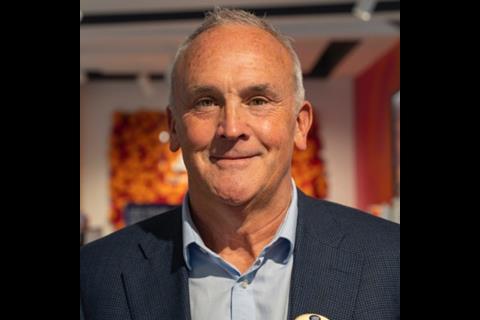



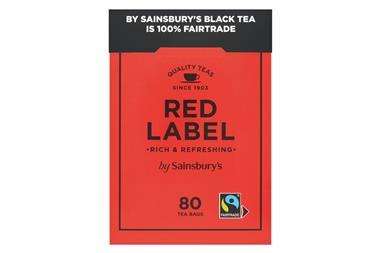
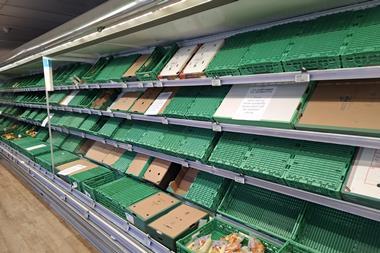




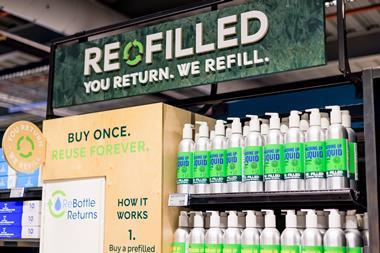


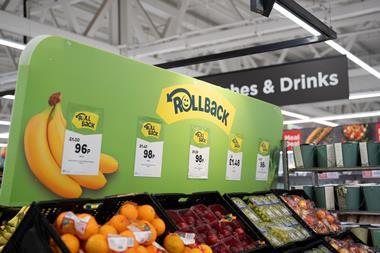
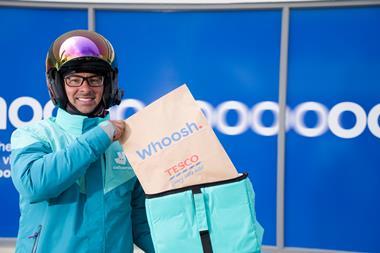
No comments yet